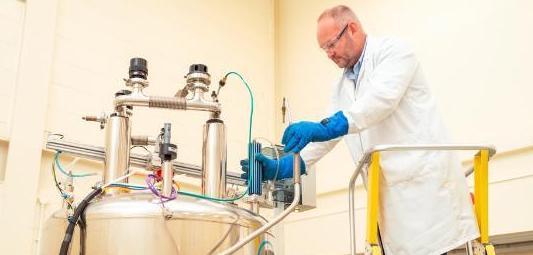A four-year project designed to give SMEs access to some of the world’s most advanced scientific analysis has been declared a major success by academics at the University of Bradford.
Project CAYMAN – Chemistry Assets for Yorkshire Manufacturing – began as a three-year initiative funded by £1.6m from European Regional Development Fund, with half that cost matched by the University of Bradford. It was extended a further nine months based on its phenomenal success.
In the last four years, it has helped 65 SMEs gain access to highly technical scientific analysis of materials that would otherwise be unavailable to them. The team from the University uses a nuclear magnetic resonance spectroscopy to examine the molecular structure of different materials.
Many of those SMEs are using the analysis to develop new products, which in turn has the potential to create jobs in the region.
Dr Richard Telford, Associate Professor in the Faculty of Life Sciences, who is Director of the Centre for Chemical and Biological Analysis, said: “Project CAYMAN has provided an excellent means for the University of Bradford to engage with regional SMEs and given us the opportunity to showcase not only our facilities and expertise, but convey how high-level analytical science can be of benefit to developing industrial processes.
“Project CAYMAN successfully met all its ERDF output targets, which, considering a large part of this project was conducted under COVID restrictions, was a major achievement. The success has demonstrated the University’s capability to deliver regeneration projects and will provide a great platform to do so again.”
Project CAYMAN was designed by academics at the UoB’s Centre for Chemical and Biological Analysis to give Leeds City Region SMEs access to analytical chemistry expertise and facilities, focusing on a technique known as Nuclear Magnetic Resonance (NMR) spectroscopy – an analytical chemistry technique used in quality control and research for determining the content and purity of a sample as well as its molecular structure.



